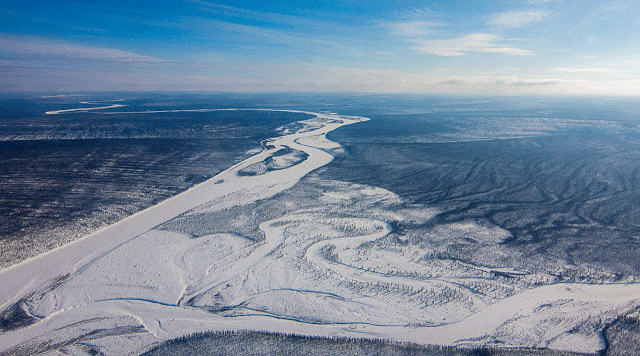Archaeologists will continue their work on Palaeolithic discoveries in the Russian Arctic, with the Kola and the Yana expeditions. The expeditions are conducted by the Russian Academy of Sciences.
The Arctic is a blank space where now construction is gradually increasing and archaeologists tend to be part of the new setting, researching before construction works begin.
The Kola expedition is an ongoing project since 1928, with archaeologists studying camps, settlements, petroglyphs, archaeology items from the Mesolithic to the Sami culture. In a recent discovery of the project specialists discovered an ancient European settlement, dated to the 3rd-2nd millennium BC, about 40 klm off the Teriberka village. The settlement is located near the Barents sea and habitants who had come from Norway would hunt sea mammals. Also, in the past decade, various archaeological monuments were discovered on the coast of the Kildin Strait, with three early-Mesolithic camps and over a hundred objects from the middle of the 8th millennium BC, the earliest archaeological items found in Russia’s European north.
The petroglyphs in Northern Fennoscandia are also another significant feature that will continue to be studied this year. Dating mainly from the 5th-7th millenniums BC, these rock carvings were more than mere drawings; they bore significant messages to the ancient people, some of which we are unable to understand today. Since 2013 archaeologists registered 1,250 carved figures and a museum of rock art opened in 2008.
The Yana camp, is situated in an area which is distinctive due to large quantities of traces of the mammoth. Unfortunately illegal digging for retrieving mammoth tusks is widespread in the area, having ruined seven “mammoth cemeteries”. Typical is the example of the Bunge-Toll camp, which is dated about 50 millenniums back, which has been ruined by the illegal hunters.
A site that for a long time was the only evidence of a human settlement in high altitudes was also discovered in the Siberian Arctic: the Berelekh mammoth cemetery and camp of the late-Palaeolithic was found in the 1960s on a tributary of the Indigirka River. Then in 1989-1990 archaeologists started excavation works at the Zhokhov camp, providing evidence of human habitation of these northernmost lands about 8,000 years ago. In 2001 the Yana camp was opened, with items dating 28.5-27 thousand years ago, so it is the oldest camp of the upper Palaeolithic in Eurasia’s Arctic zone.
Researchers from the Academy’s Institute of Material Culture Studies say there is evidence that the ice age was not the reason for de-population of Siberia by humans, since discoveries in 2016 indicate that people who lived in the Siberian Arctic 30,000 years ago had reached quite high levels of culture, technologies and hunting skills.




